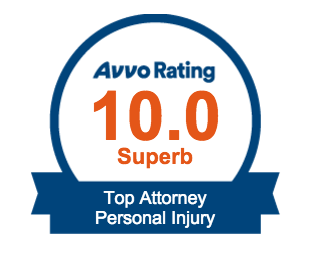Call For A Free Consultation
415-897-4801
Novato Corporate Office (Mailing Address):
10 Commercial Blvd #206 Novato, CA 94949
Offices Located In San Francisco, Oakland, San Jose, Walnut Creek, Pleasanton, Santa Rosa, Napa, Redwood City, Sacramento and Newark
Pedestrian Accidents Involving Buses: Who is at Fault?
Pedestrian accidents involving public transportation like buses are unfortunately common occurrences in cities and towns across the United States. When a pedestrian is hit by a bus, it often results in serious injuries or even death for the pedestrian. Determining who is at fault and liable for damages in these types of accidents can be complicated. There are a number of factors that influence the determination of fault.
Duty of Care Owed to Pedestrians
Both pedestrians and bus drivers have a duty of care when it comes to avoiding accidents. Pedestrians must exercise reasonable care when walking near busy roads and should avoid suddenly stepping in front of oncoming traffic. Bus drivers owe pedestrians a heightened duty of care to drive slowly and cautiously around crosswalks, bus stops, and other areas where pedestrians may be present. This is because buses are large, heavy vehicles that can easily cause major damage in a collision with a pedestrian.
Liability When Pedestrian Has the Right of Way
If a pedestrian has the legal right of way when struck by a bus, this will weigh heavily in determining that the bus driver is at fault. Some situations where pedestrians normally have the right of way include:
- At a crosswalk when the pedestrian has a “walk” signal. Bus drivers must yield the right of way to pedestrians who have a walk signal at a crosswalk, even if the bus has a green light. Failure to properly yield and hitting a pedestrian with the right of way is likely negligence on the part of the bus driver.
- Crossing at an uncontrolled intersection. When crossing at an intersection without traffic lights or stop signs, pedestrians have the right of way over vehicles. Bus drivers are required to slow down, allow pedestrians to cross, and yield the right of way.
- Crossing in a marked crosswalk without traffic lights. Marked crosswalks at intersections without lights still grant pedestrians the right of way. Bus drivers must slow and prepare to yield when approaching marked crosswalks.
- When a stopped bus blocks sight lines and a pedestrian attempts to cross after checking for oncoming traffic. If a stopped bus obstructs the view of a pedestrian attempting to cross, they are allowed to cautiously enter the intersection after checking for traffic. Hitting them is likely the failure of the bus driver to yield.
- At locations where special pedestrian yield signs are posted. Some crosswalks have explicit signs stating that vehicles must yield or stop for pedestrians, which always grants pedestrians the right of way.
In these types of situations, the bus driver is expected to yield to pedestrians and can usually be held liable for hitting them. However, comparative negligence laws in some states mean a pedestrian’s own negligence can potentially reduce the amount of damages they are eligible to recover.
Liability When the Pedestrian is Jaywalking
If a pedestrian is hit while improperly crossing a roadway in an unmarked crosswalk or “jaywalking,” this will weigh against finding the bus driver at fault. Jaywalking pedestrians are likely at fault themselves for failing to yield the right of way to oncoming traffic. However, bus drivers still have a responsibility to drive carefully and slow down when spotting jaywalkers.
So, in a jaywalking scenario, fault is often shared between both parties. Again, comparative negligence laws in some states would reduce a jaywalker’s damages based on their percentage of fault.
Factors That Influence Determining Fault
There are a number of specific factors that can influence deciding whether the pedestrian or bus driver was primarily at fault:
- Where exactly the accident happened – Was it at a crosswalk, an intersection, or in the middle of the block?
- Whether the bus stopped at the designated stop – Failure to do so could make the driver liable.
- The speed of the bus prior to the accident – Was it over the posted speed limit?
- Weather and road conditions at the time of the accident – Poor visibility or slippery roads could reduce the driver’s liability.
- Failure of the pedestrian to look both ways before crossing.
- Pedestrian distraction prior to the accident, like texting or wearing headphones.
- Mechanical failures of the bus, like brake problems.
- Vision obstructions such as illegally parked cars blocking the bus driver’s view.
- Tire marks and other accident scene forensic evidence.
- Witness statements about what happened.
- Video footage from the bus or surrounding security cameras.
Comparative vs. Contributory Negligence Laws
States apply different legal doctrines when an accident involves shared fault between multiple parties. Some states follow traditional “contributory negligence” rules, which can completely bar a pedestrian who was even 1% at fault from any recovery.
Other states apply “comparative negligence,” which allows a partially negligent pedestrian to still recover damages but reduced by their percentage of fault. So, a pedestrian who was 30% responsible for the accident with a bus could still potentially recover 70% of the damages.
Determining fault in pedestrian vs. bus accidents almost always involves complicated legal analysis of the specific facts of the incident. Consulting with an experienced personal injury attorney is highly recommended if you have been injured as a pedestrian by a bus. An attorney can help gather evidence, prove fault, and maximize your potential recovery.
Seeking Compensation for Your Pedestrian Accident Injuries
Being involved in a pedestrian accident with a bus can lead to catastrophic injuries, including head and brain trauma, broken bones, spinal cord damage, and other severe harm. The negligent actions of a bus driver that led to the crash should not prevent an innocent pedestrian from receiving fair compensation for their injuries, lost income, pain and suffering, and other damages.
Potential compensation sources after a pedestrian bus accident injury include:
- Driver/bus company insurance policies
- Your own auto, medical, or disability insurance
- Personal assets of the negligent driver
- Uninsured/underinsured motorist coverage
- Personal injury lawsuit and settlement
The experienced and compassionate pedestrian accident attorneys at Rush Injury Law are here to help if you or a loved one has been injured as a pedestrian by a bus. Visit one of our offices at:
- 10 Commercial Blvd, #206 Novato, CA 94949
- 75 Broadway #202, San Francisco, CA 94111
- 3558 Round Barn Blvd, Suite 200, Santa Rosa, CA 95403
Or call us today for a free consultation on (415) 897-4801.
Want A Free Consultation?
© 2025 Rush Injury Law. All Rights Reserved.














